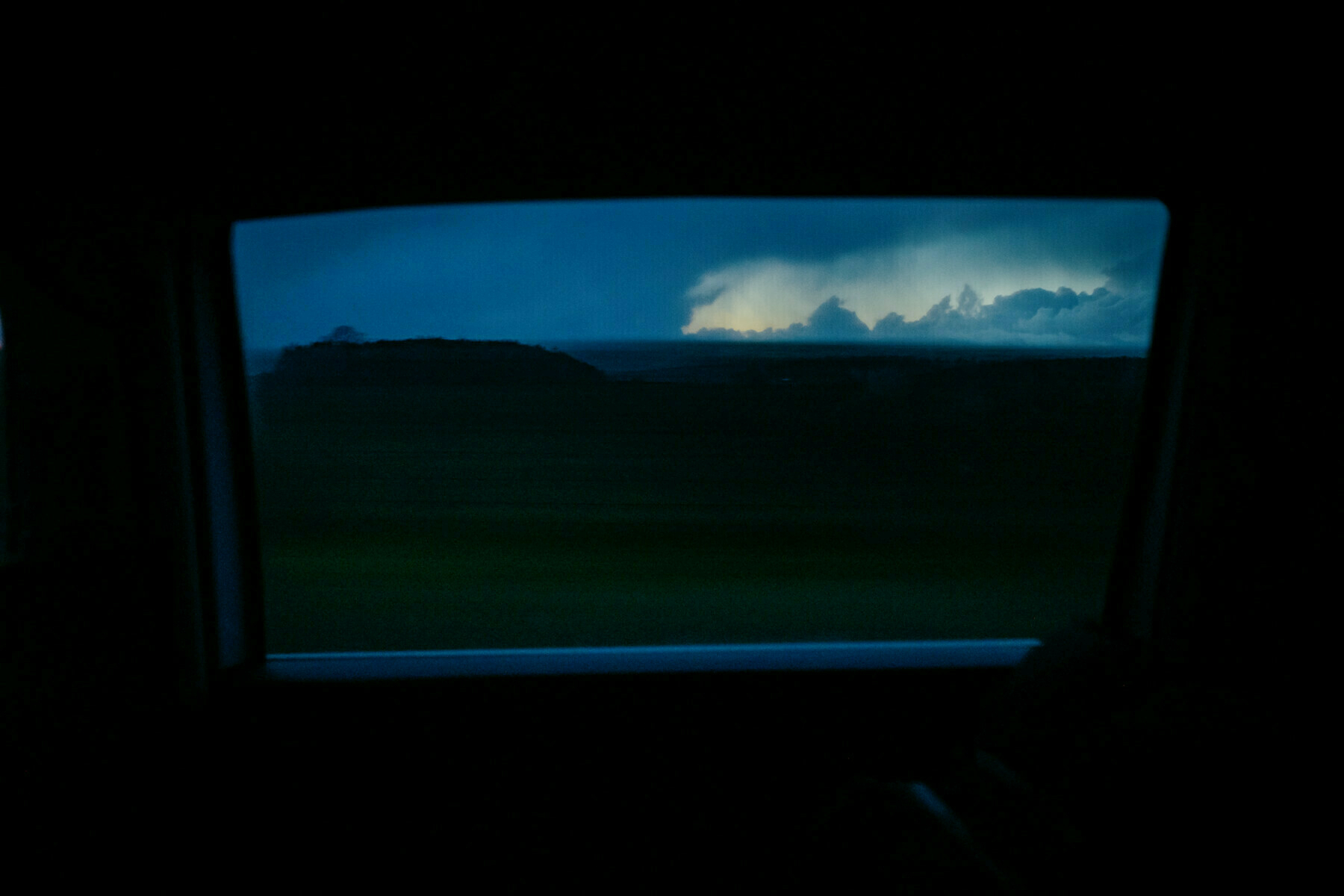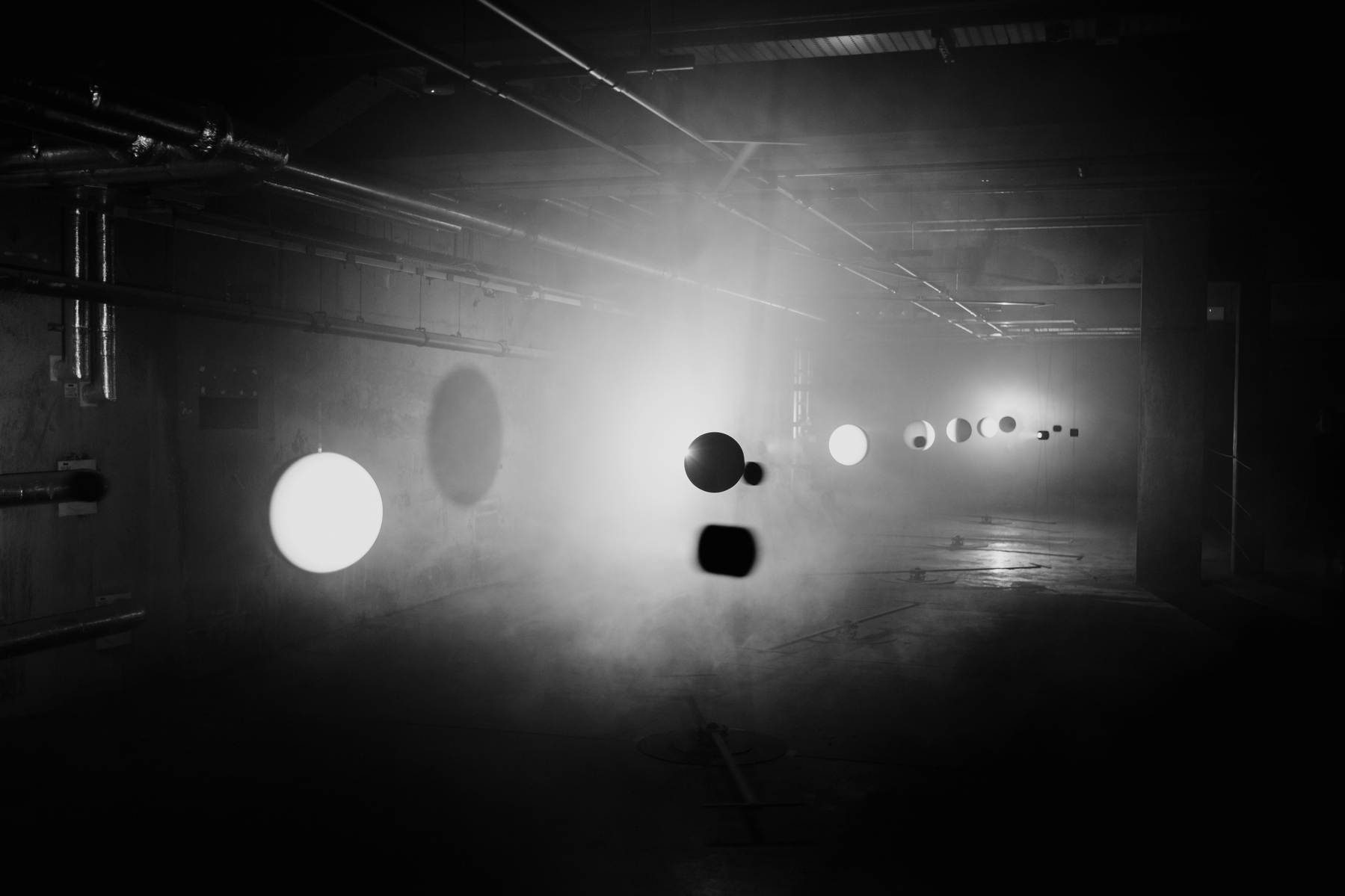
View from the library at Cliveden House.
“Photography can be a mirror and reflect life as it is, but I also think that perhaps it’s possible to walk like Alice through the looking-glass, and find another world with the camera —Tony Ray-Jones
Bonus link: lovely B&W pics of Brits by the seaside by Ray-Jones

William Eggleston by Stefan Ruiz
A lovely confluence of three things that I love at one link: William Eggleston, NTS, and contemporary classical/ambient music:
William Eggleston 23rd July 2024 | NTS

William Eggleston by Jody Rojac
The colour photography legend is as steeped in music as in the visual arts (at times referring to music as his first calling), and makes exploratory compositions on piano and synthesiser. Eggleston’s music remained unreleased until 2017’s Musik LP and this is a delicate and rare hour of his music alongside work from Harold Budd, Karl Richter, Eno and others. It’s a finely textured and mellow set that is perfect for editing sessions or kicking back and dissolving into.

The images in this post show a few of my favourite portraits of Eggleston at the piano. He is a wonderful portrait subject — soulful and present, elegant and a little scruffy. Juergen Teller has also shot a set of him sans piano that are excellent too.

William Eggleston by Juergen Teller
“Sell your cleverness and buy bewilderment.”
—Rumi

Ade & friends, Primrose Hill, June 2024
I was walking back from the outdoor gym in Primrose Hill, feeling knackered from a couple of weeks of full days and late nights. I saw these guys squeezed onto the bench together, having a great time, and thought it would make a good picture, so I decided to ask them for a portrait. But as I got closer to them, and before I could say anything, Ade, on the left, called out to me and said, “You look like you could do with a hug…” And when I laughed and said, “Yes, that would be great”, he got up and gave me a bearhug. They were great, so warm and relaxed. We chatted a bit, I took a few pictures, and they asked what my ‘top photography tip’ was. Such a sweet and fun encounter.
Unfortunately, a huge rain storm blasted through five minutes after I’d walked on, putting an end to their chilled afternoon in the park. I jogged home and arrived soaked through.
“Listen to what your work is trying to tell you, because it is the mother of your next work.”
Anthony Gormley’s advice to artists, from an excellent interview on the Art Talk podcast. Lots of insight into his practice and all the wisdom about art and life that you would expect from such a deep thinker and practitioner. I also particularly liked his explanation for using his own body as a basis for much of his work (and interestingly, from very early on in his art journey):
“Can I use this bit of the material world that is closest to me, in fact the bit that I live inside, as both the tool, the material, and the subject of the work? Not because it’s special […] but because it’s the only bit that I can work on from the inside — from the other side of the accident of appearance.”
Lots of great stuff about his choice of materials and ‘the studio as a tool for artmaking’; as well as deciding early on with his wife, the painter, Vicken Parsons, on the life and art practice they wanted, and reverse engineering it to help them decide what to do in the present.

According to Zola a work of art “is a corner of nature seen through a temperament”.
Via Edward Burtynsky from In the Wake of Progress
Paulie B’s Walkie Talkie series is one of my favourite aspects of photography YouTube. I loved two of his most recent episodes — for passion both subjects have for photography, but also because, set against each other they show what a gloriously broad church (street) photography is.
Laura Fuchs is a pulsing beacon of pure joy who radiates throughout every interaction she has on the streets of NYC. Her mission is seemingly to meet everyone and anyone, blast them with her megawatt smile and make a portrait of them. Quoting from the comments, she’s “casually walking around giving people their [sic] best profile pictures in their lives for free”. I watched the entire episode with a huge stupid grin on my face, and if it hadn’t been late in the evening, I would have grabbed my camera to go and take pictures. Pure positivity, pure enthusiasm.
Jake Ricker has been walking the Golden Gate Bridge almost every day for four years, photographing the people, cars and views. The video gives an insight into his compulsion to make work about the bridge, and the difficult and beautiful experiences he has had while doing so. It’s a place that often attracts people in extremis, as well as commuters passing through, and working on the bridge as led to him saving a handful of lives as well as photographing car accidents. It’s often uncomfortable viewing — the pictures are incredible, but it’s heartbreaking to hear that he has gone into debt to continue the project and at times you can see how conflicted he is. Evidently there’s a tug of war in his heart and mind about whether the obsession is worth the psychological and financial pain. In a different way to the Laura Fuchs video, it makes me want to make images. Not because of the feeling of sympathetic joy that I get while watching Laura work the streets, but because his intensity is awe-inspiring (literally so: it inspires equal parts fear and respect.) It makes me wonder what I could achieve if I dedicated myself to a project with even a fraction of his ferocity.
The two photographers have very different approaches and personalities, but they’re united by the core demand of street photography — relentless engagement with the world, over an extended period of time.

I loved Matt Webb’s short post about driving in the dark, listening to the Twin Peaks soundtrack, his wife and child asleep. He talks about night driving as “an eternal cognitive location”, an in-between space, a thinking state.
In Matt’s lovely words:
I think you access something other and special when you escape time, escape selfhood, whether that’s driving in the dark or sitting in a hotel lobby or walking, that’s another one.
It does a disservice to this cognitive state to believe that it can be found only with psychedelics or meditation or whatever, whereas there are mundane apertures too, and we do a disservice to alternative cognitive states to choose to name “flow," simply because it relates to productivity, and to leave nameless this mode of becoming diffuse and sensitive, able to sense resonances and new ideas from species memory and from the future, and from there, pluck them, and return home with them.
Driving at night is just one of the situations that act as a gateway into a similar subtle and unbounded creative state for me. I love the feeling of being the only passenger still awake on a night flight, listening to music, perhaps looking out the window at the faint black curve of the edge of the world. Or being awake in the early hours pacing back and forth, lulling the baby in your arms to sleep using a combination of deep breathing and telepathy. Also, working late at my old studio on a Friday or Saturday night, the building empty, the present moment stretched to infinity, nothing beyond the glow of the screen and the warm pool of light from the desk lamp.
It’s a different kind of quiet in the early hours. Being alone, or alone amongst others is a big part of what makes it peaceful, but it’s not lonely. The tranquility embraces you, smudging your edges. Comforted, you’re able to let the tendrils of your thinking radiate outwards. The darkness is essential too — it drapes a blanket of stillness over the rest of the world — as if the only movement in the block universe is happening in the dimly-lit space that surrounds you. You’re outside of spacetime, gestating in womb-time.

Don’t think about making art. Just get it done. Let everyone else decide whether it’s good or bad, whether they love it or hate it. While they’re deciding, make even more art.”
—Andy Warhol
A few images from the penultimate day of the UVA : Synchronicity show at 180 Studios.









“I don’t have a philosophy. I have a camera. I look into the camera and take pictures. My photographs are the tiniest part of what I see that could be photographed. They are fragments of endless possibilities.” —Saul Leiter
In art and dream may you proceed with abandon. In life may you proceed with balance and stealth.
—Patti Smith